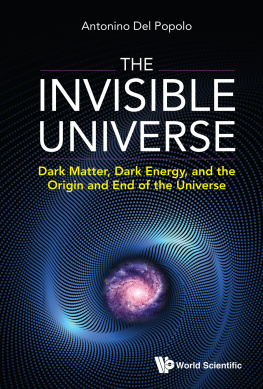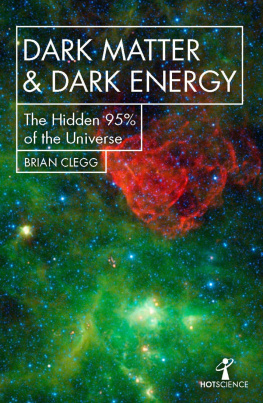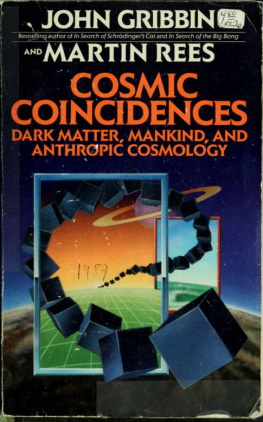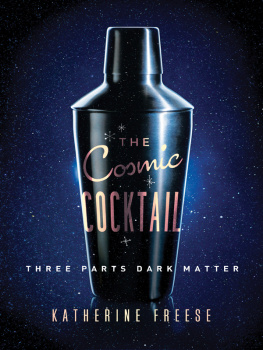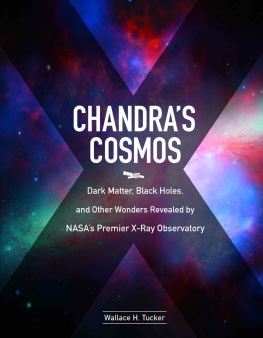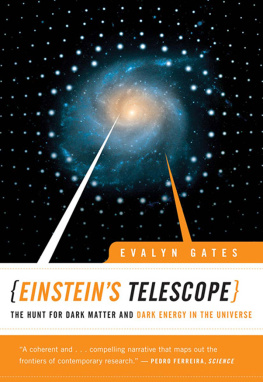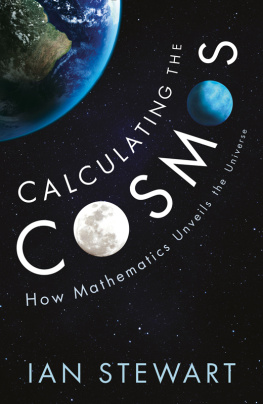Contents
Guide
Pagebreaks of the print version

Bright Galaxies, Dark Matter, and Beyond
The Life of Astronomer Vera Rubin
Ashley Jean Yeager
The MIT Press
Cambridge, Massachusetts
London, England
2021 Massachusetts Institute of Technology
All rights reserved. No part of this book may be reproduced in any form by any electronic or mechanical means (including photocopying, recording, or information storage and retrieval) without permission in writing from the publisher.
Library of Congress Cataloging-in-Publication Data
Names: Yeager, Ashley Jean, author.
Title: Bright galaxies, dark matter, and beyond : the life of astronomer Vera Rubin / Ashley Jean Yeager.
Description: Cambridge, Massachusetts : The MIT Press, [2021] | Includes bibliographical references and index.
Identifiers: LCCN 2020047103 | ISBN 9780262046121 (hardcover)
Subjects: LCSH: Rubin, Vera C., 19282016. | AstronomersUnited StatesBiography. | Women astronomersUnited StatesBiography. | Dark matter (Astronomy)
Classification: LCC QB36.R83 Y43 2021 | DDC 520.92 [B]dc23
LC record available at https://lccn.loc.gov/2020047103
d_r0
For DArcy, Ella, and all young girls
who dream of becoming scientists
Contents
List of Figures
Vera Cooper, nineteen years old, married Robert Rubin in downtown Washington, DC. Credit: Rubin family.
Vera sits with her children (left to right) Karl, Dave, Allan, and Judy at Bear Lake in Colorados Rocky Mountain National Park in 1961. Credit: Rubin family.
While at Kitt Peak, Vera works with the spectrograph Kent Ford built for the Department of Terrestrial Magnetism. Credit: Rubin family.
An image of Andromeda overlaid with the galaxys rotation curvea plot of the velocities of stars and gas orbiting the galaxy against their distance from the galaxys center. Radio astronomy observations are shown as triangles. The curve is flat even far beyond where the starlight drops off, implying that there must be extra massdark matterin the outer reaches of the galaxy to pull the stars and gas along at faster than expected speeds. Courtesy Carnegie Institution for Science/Vera Rubin and Janice Dunlap.
Vera measures spectra of galaxies at the Department of Terrestrial Magnetism. Credit: Emilio Segre Visual Archives/American Institute of Physics/Science Photo Library.
Rotation curves for twenty-one spiral galaxies, including the two gargantuan galaxies, UGC 2885 and NGC 801. The curves do not fall down on the right, as expected if only visible matter were there. The curves flatnessif we understand gravity correctlyimplies galaxies have some unseen matter. Credit: Rubin et al., Astrophysical Journal (1980).
Vera sits in her office at the Department of Terrestrial Magnetism during an oral history interview with the author (left). Credit: Smithsonian Institution.
Prologue
A flip of a switch, and astronomer Vera Rubin disappeared. The darkness of the telescope dome swallowed her hourglass frame as she quickly and confidently took a few steps, grabbed the staircase banister, and climbed up. At the top of the stairs, she slid her hand across the door, found the knob, and pushed. Nothing happened. Like a football lineman, she lowered her center of gravity and threw her weight against the hinged hunk of metal, bumping it open with her hip.
A cool gust of air knocked her in the face, and instantly her eyes flicked upward. She scanned the sky east to west, as if searching for the faint glow of the galaxies shed studied over the past six decades. Now, on the catwalk of Kitt Peak National Observatorys 2.1-meter telescope, she walked slowly toward a second door, without looking down. Vera savored the silence and the starlight.
It was close to six in the evening on a cool November night in 2007, and Vera and her longtime collaborator, astronomer Deidre Hunter, were about to awaken the telescope and turn it skyward. They planned to point the huge glass eye at a spiral galaxy called NGC 801 and another called UGC 2885, one of the universes largest swirls of stars. After one last look at the stars, Vera again disappeared into the darkened telescope dome, crossed it, as shed done dozens of times before, and walked back to the control room. She removed her hat and gloves, smoothed her cropped, white hair, straightened her owl-eyed glasses, and sat down. Faint rumbling began outside as a massive metal garage door slid open, and the telescopes mirror cover was systematically removed, giving the highly reflective glass eye sheltered inside its first sight of the sky that night.
Then there was silence. Vera and Deidre pushed buttons, flipped through their observing logs and notebooks, and continually checked the telescope. Finally, about thirty minutes later, Vera spoke: We are getting more distance than I did in 1980.
In 1980, Vera and her colleagues had been trying to find stars at the extreme fringes of spiral galaxies and measure those stars velocities.
Vera wasnt sure what to make of what she saw. The data seemed to defy the laws of physics. Thats because astronomers had thought a galaxys stars and gas would swing around the spiral just the way planets circle the sun: the closest objects move the fastest, while the ones farthest from the stars gravitational grip move more slowly. A spiral galaxys stars, many astronomers assumed, should behave similarly, with the stars closer to a galaxys core traveling much faster than the stars farther out. But that wasnt what Vera saw. Instead, Andromedas outermost stars moved around the galaxy just as quickly as the stars closer to its corevery unusual behavior.
Vera wasnt the only person who saw that stars and gas in galaxies didnt behave the way astronomers had expected. Radio astronomers, who studied the heavens in radio wavelengths, were also observing faster-than-expected speeds for galaxies gas.
Nature seemed to demand that astronomers rethink the content of the cosmos.
To explain the swift speeds of stars and gas that Vera and others had observed, the universe would need more matter. Astronomers didnt know what it was or really where it was, but the speedy stars and gas suggested that some form of additional matter did in fact exist. This extra matter was called dark matter, a nod to astronomers in the 1920s and 1930s who first noticed that stars in galaxies and galaxies in clusters didnt move at the speeds Isaac Newtons law of gravity predicted; they moved much faster. To explain the fast speeds of stars in the Milky Way, Dutch astronomer Jan Oort in the 1920s had suggested that our galaxy might have dark matter tugging them along. A few years later, an astronomer at Caltech, Fritz Zwicky, also suggested that galaxies needed extra mass; without it, the Coma clustera clutch of more than a thousand galaxies sitting some 322 million light-years from Earthshould fly apart. Yet that wasnt what astronomers saw. Instead, the galaxies in the cluster stuck together. Around that same time, as World War II loomed, Horace Babcock, a graduate student at the University of California, Berkeley, also made observations that hinted at the existence of dark matter. He showed that Andromeda, which Vera would study decades later, might need some extra matter, again to explain the fast speeds of stars circling the galaxys center. The universe, the studies seemed to suggest, wasnt what it seemed. The universe needed more matter. Those clues pointing to the need for additional matter to exist failed to capture astronomers attention, and so the hints that dark matter existed went unheeded.


